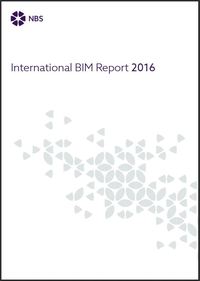The second NBS International BIM Survey, carried out by NBS, working closely with the International Construction Information Society, provides a fascinating insight into BIM adoption and maturity across five diverse countries.
 By running similar surveys (and sharing some key questions) we’ve been able to compare BIM adoption across the UK, Czech Republic, Canada, Japan and Denmark, shining a light on similarities and differences in current attitudes and beliefs in the future of BIM.
By running similar surveys (and sharing some key questions) we’ve been able to compare BIM adoption across the UK, Czech Republic, Canada, Japan and Denmark, shining a light on similarities and differences in current attitudes and beliefs in the future of BIM.
Today we launch the NBS International BIM Report 2016 which serves to document a complex and ever evolving picture – with different stages of BIM development evident in different countries, and the effects of governmental policy (such as the UK government’s BIM mandate) starting to be felt.
Running an international study has posed a range of methodological challenges. Aside from differences in language (with the associated problems of fidelity and grace in wording) there will, naturally, be national differences in understanding what BIM is; differences rooted in different construction practices and regulatory frameworks. Therefore it’s best to read this report as a fascinating, but indicative, picture.
(.pdf, 4.2Mb)Interested in BIM content from NBS? Register for our BIM newsletter.
What's in the report?
- Views about BIM and the Government's construction strategy
- BIM adoption – current and future trends
- Attitudes towards BIM
- The difference BIM makes to a practice
- Specialist opinion pieces
Who is it for?
- UK construction professionals including architects, engineers, surveyors and contractors
- Manufacturers – already embarking on BIM or just starting to consider it
- Policy makers.
Key findings
- A complex picture – different stages of development are evident in different countries but a broad similarity in views about BIM is evident.
- BIM is seen as the future of project information – in every country, more than three quarters of respondents agree.
- In all countries (bar the Czech Republic) BIM awareness is nearly universal (at over 90%).
- The UK and Canada (surveyed in 2013, and again here) report increased numbers of BIM users – the UK has moved from 39% to 48%, Canada from 64% to 67%, though we urge caution as the term may have different interpretations in different countries.
- Within five years all countries expect BIM to be adopted by over 80% of design professionals with the next 12 months seeing the most rapid rate of adoption.
- Typically 90% of respondents are using BIM to produce 3D visualisations. Clash detection is used by more than three quarters of BIM users in all countries. Performance analysis is also widely used with Denmark leading the way.
- The UK scored highest for agreement that government ‘is on the right track’ and ‘BIM will be required for public sector work’ – suggesting in the UK at least, the design community is open to the idea of the government taking the lead on BIM.
- When it comes to information exchange, Denmark leads the way in Industry Foundation Classes (IFC) use – with 65% of respondents having used them on projects compared to 55% in Japan, 49% in the UK and 45% in the Czech Republic.
- Most respondents recognised that BIM is a process that demands changes in workflow, practice and procedure. Only a small minority of non-users (less than a fifth) say they would rather not adopt BIM. Encouragingly, those that have adopted BIM rarely regret having done so.
Related reading
NBS International BIM Report 2013
Related NBS Services
The NBS BIM workflow is powered by a suite of tools that enable you to produce co-ordinated digital design information. Find out more about NBS services for BIM projects.


